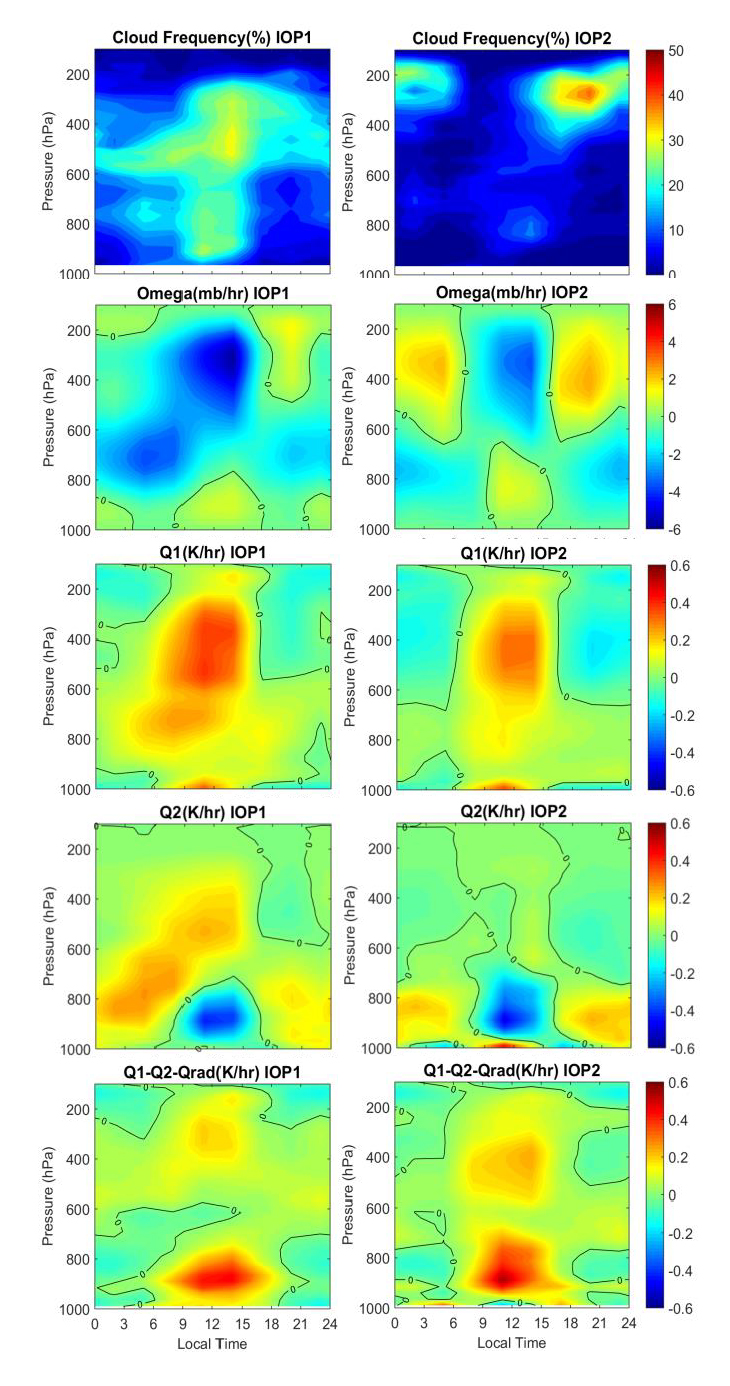Seasonal and diurnal variations of large-scale budgets observed in the GoAmazon2014/15 experiment
Submitter:
Tang, Shuaiqi — Pacific Northwest National Laboratory
Area of research:
Atmospheric Thermodynamics and Vertical Structures
Journal Reference:
Science
Amazonia is one of the major tropical convective regions in the global climate system, providing moisture to the global hydrological cycle and energy to drive the global atmospheric circulation. This study aims to improve our understanding of the seasonal and diurnal variation of convective systems over the Amazon region and their associated large-scale structures through data collected from the GoAmazon2014/15 experiment.
Impact
The improved understanding of the tropical cloud systems and their environments will lead to a better representation of convective processes in weather and climate models.
Summary
Propagating convective systems originating far from the Amazon region are often seen in the early morning of the wet season, while they are rarely observed in the dry season. Afternoon convective systems due to solar heating are frequently seen in both seasons. Accordingly, in the morning, there is strong upward motion and associated heating and drying throughout the entire troposphere in the wet season, which is limited to lower levels in the dry season. In the afternoon, both seasons exhibit weak heating and strong moistening in the boundary layer related to the vertical convergence of eddy fluxes. A set of case studies of three typical types of convective systems occurring in Amazonia—i.e., locally occurring systems, coastal occurring systems, and basin occurring systems—is also conducted to investigate the variability of the large-scale environment with different types of convective systems. Locally occurring systems are often seen in both seasons, will little seasonal variability. Coastal occurring and basin occurring systems happen more in the wet season than in the dry season. These three different types of convective systems are associated with large-scale structures of heat and moisture budget.


